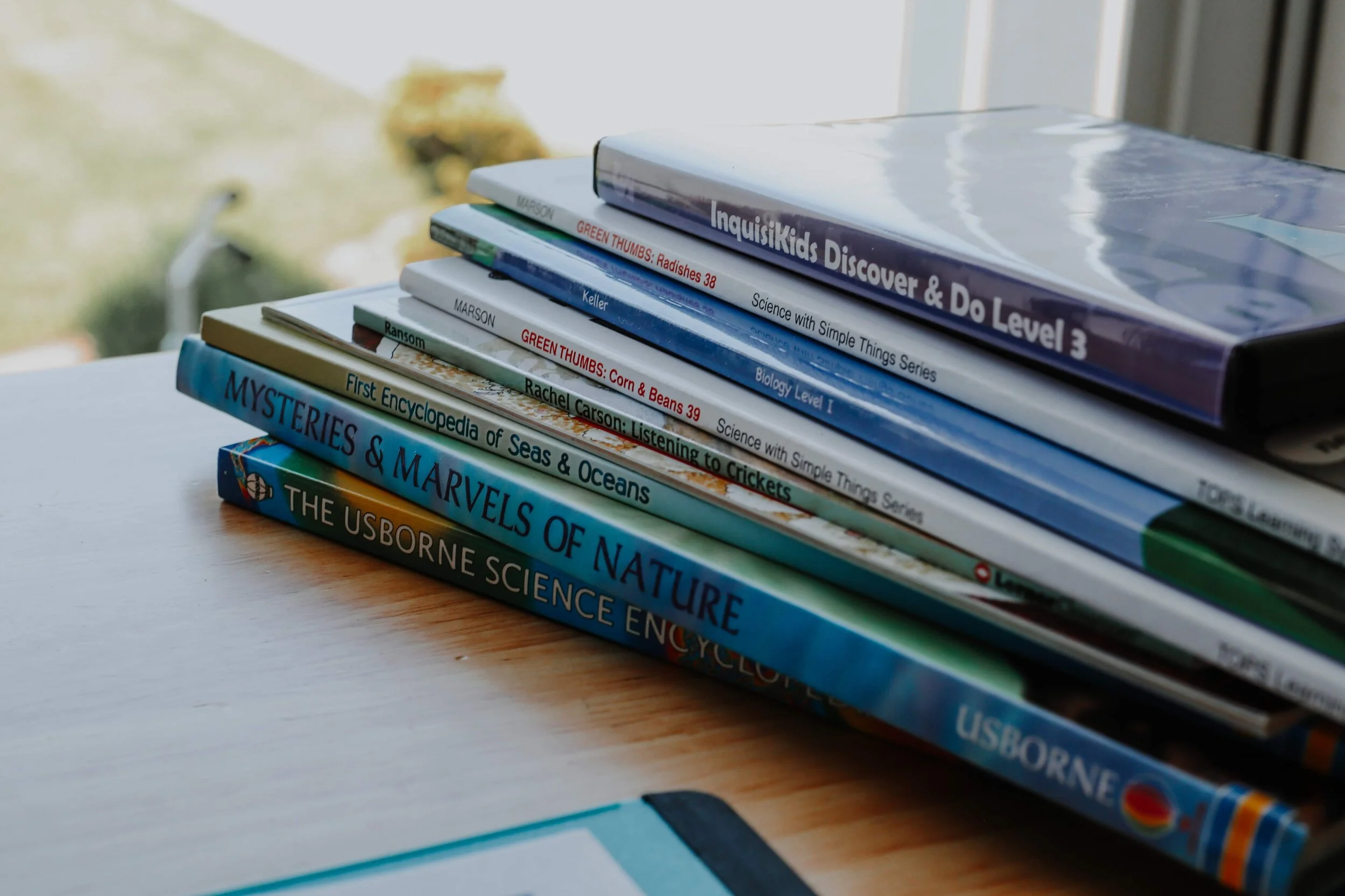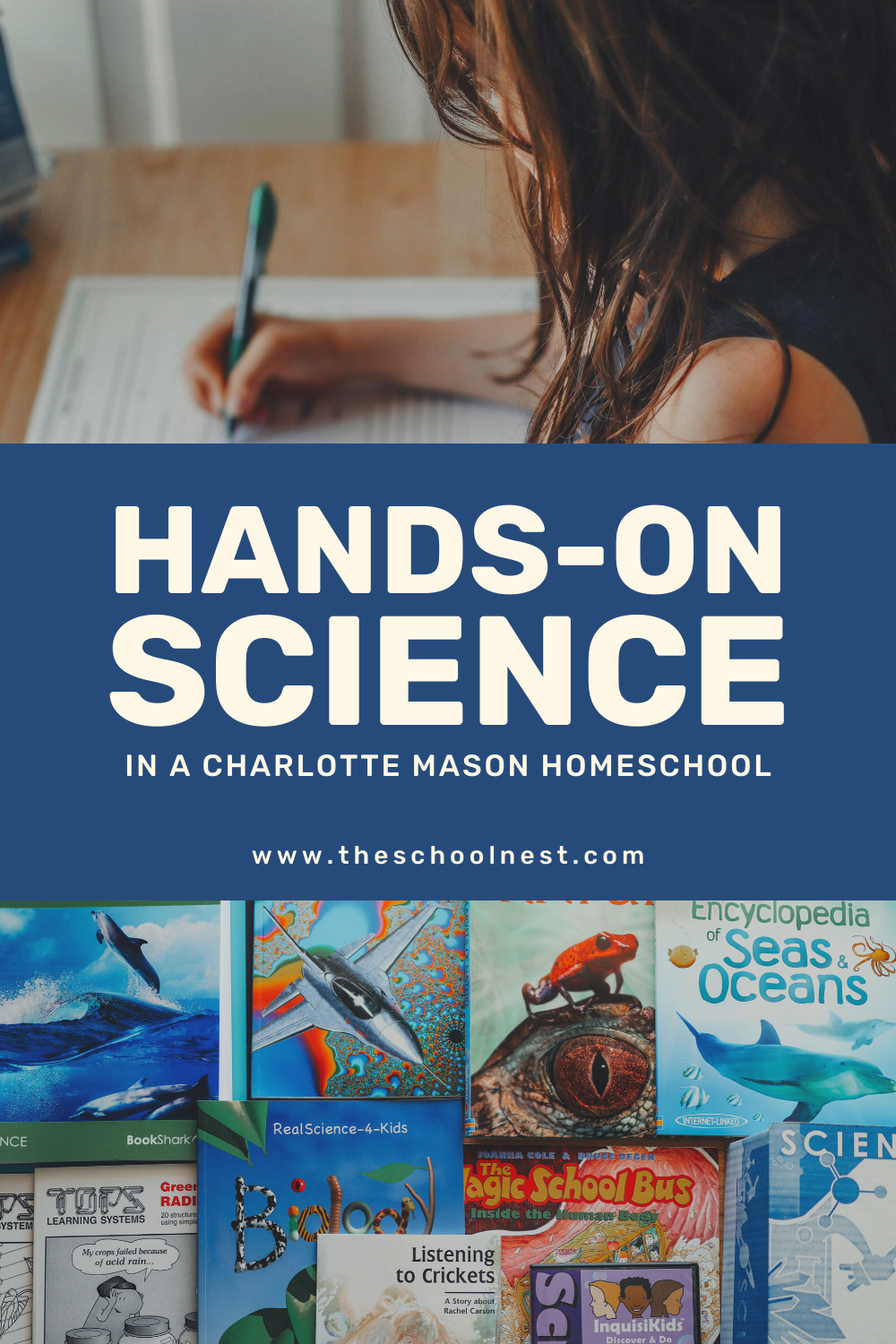Engaging Hands-On Science with BookShark in a Charlotte Mason Homeschool
schoolnest is passionate about authenticity in sharing quality homeschooling resources. This post is sponsored. I received the BookShark Science Level D for free and was compensated for my time. View my disclosure policy for details.
In our family, we really love learning through books.
Living books, beautiful stories that draw us in and inspire us to think deeply. This drew me into Charlotte Mason’s methods of teaching most subjects through well-written books. We love to learn about animals through James Herriot and Arabella Buckley’s stories. But my very modern little children also LOVE the detailed facts and real images in children’s encyclopedias and go wild for any “science experiment” I am brave enough to put in front of them. I asked my oldest child (8 years old) what she would love to do more of in our lessons and she didn’t hesitate to answer with “Science experiments… every day!”. Well then. Looks like I need to phone a friend. Hey BookShark, are you there? Can you help a mama out?
Getting Hands-On With Homeschool Science
Learning through experience can be a very powerful thing. We can read about something and think about it in theory, but until we see it in action or try something for ourselves, it can feel like just distant ideas. Using our hands and experimenting leads us toward deeper understanding. As homeschooling parents, we know this to be true when we read about learning/teaching methods and then try them in our actual homes with our real live kids! Suddenly things become much more clear.
It is for this reason that I want to make sure we experience science (and the other subjects!) in many different ways. BookShark Science curriculum combines book learning with hands-on learning to give us the best of both worlds. The Level D Package (ages 8-11) covers Biology, Taxonomy, and Human Anatomy through very visual children’s encyclopedias and books, TOPS Learning Systems hands-on science activities, and a Discover and Do DVD to see the experiments performed and follow along. Working through these lessons will have us reading, writing (the instructor’s guide is filled with detailed activity sheets to correspond with the lessons), questioning, and experimenting our way through the year.
The Anatomy of a BookShark Science Lesson
In The Well-Trained Mind by Susan Wise Bauer, she describes the method of science study suggested for Classical homeschoolers as using encyclopedias as a spine to guide you through scientific topics, then branching off of those books by heading to the library to explore further and find living books on your topics of interest, then documenting your learning through notebooking, narrating, projects, and experiments.
This is very similar to the way BookShark has set up their science lessons! The bright and photo-heavy children’s encyclopedias are scheduled out for you in the instructor’s guide, broken down into short readings by topic. BookShark includes activity sheets that you work through with the student to help them narrate and process the topics you read about together.
To extend and enrich these lessons, a trip to the library to explore the books on topics that students showed a deeper interest in, would be ideal! Not every topic needs a pile of library books - allow interest to be the guide.
BookShark also includes Optional Activities that are often playful or hands-on. These are meant to be a “choose your own adventure” because you know your child best. They suggest that you only complete the ones that sound fun for your family! I love a good no-pressure curriculum.
The Biology portion of the curriculum includes the bulk of the hands-on experiences with its TOPS Learning Systems books. These two books and accompanying Discover and Do DVD guide you through a vast array of experiments using seeds and materials that come in the science kit! The DVD makes these experiments seem so much more approachable - I usually shy away from experiments that need so many supplies and have steps. The instructor on the DVD is funny and easy to follow - a bonus that she is a young female scientist! My science-loving girls love her!
What Does A Week of BookShark Science Look Like?
Despite the thick (maybe intimidating?) instructor’s guide, a week of lessons broken down into four days of short lessons had me saying “oh, we can do that!” rather than feeling overwhelmed. There is a mixture of non-fiction book learning, recalling and processing the reading through a small amount of written work on the activity sheets, a day of watching a short experiment on the Discover and Do DVD, and two optional playful activities to extend the lessons. Some weeks might have you reading the included scientist biography or completing the hands-on experiments.
Here is what week one looks like:
Day 1
Read two short sections of Real Science-4-Kids: Biology Level 1 introducing the meaning of biology and the concept of taxonomy. (5 min)
Complete three questions on the corresponding activity sheet (the instructor’s guide encourages parental involvement with the activity sheets, helping the student write if necessary, not completing every question if it’s too challenging, and they stress that students are being introduced to these topics and vocabulary words that they’ll circle back to at a higher level when they’re older - they are not meant to memorize or retain it all!)
Day 2
Read a three page section in Real Science-4-Kids: Biology Level 1 that discusses kingdoms. (10 min)
Complete three questions on the corresponding activity sheet
Watch one track on the Discover & Do Level D DVD
Engage in the optional activity to create a Kingdom Poster Board about one of the five kingdoms they’d like to learn more about. This is interest-led, something hands-on that they can have fun with and use their creativity and curiosity!
Day 3
Read a one page section in Real Science-4-Kids: Biology Level 1 about further classification (5 min)
Complete two questions on the corresponding activity sheet
Day 4
Read a one page section in Real Science-4-Kids: Biology Level 1 about naming living things (5 min)
Complete two questions on the corresponding activity sheet
Engage in the optional activity to create their own names for unfamiliar animals based on their photos in the encyclopedia, then see what the real names are!
So over the course of just one four-day week of short BookShark Science lessons, the student will have read about the meaning of biology and creation of taxonomy and how it is used to classify living things, read and made note of the five kingdoms, explored how characteristics are used in classification, researched a kingdom in order to create a visual presentation about it, and playfully created their own names for various living things. The introduction to so much rich content in such a short amount of time is food for the mind and I love that this richness can lead us to seek out living books on the topics we were introduced to in these lessons!
Systematic Studies & Spontaneous Discovery
Since this level of BookShark Science guides us through Biology, Taxonomy, and Human Anatomy with the use of science encyclopedias and a textbook as spines, it means we will be working quite thoroughly through many topics. As we are introduced to the name of a scientist, an interesting scientific phenomenon, or fascinating creature - we can use these lessons as a launchpad for our own rabbit trails of discovery and find living books on these topics!
In the very first day of BookShark Science D lessons, Carolus Linnaeus is briefly introduced as the founder of taxonomy. A quick google search lead me to a picture book biography called Karl, Get Out of the Garden!: Carolus Linnaeus and the Naming of Everything. Adding that to our afternoon read-aloud or our bedtime reading would light my kids up as they recognized that we had just head about him earlier in the week during our science lessons! Extending our lessons in this way outside of our “school time” is one way they can make connections and deepen their learning. The following morning I can have them tell me about Carolus and add a drawing to their narration notebook.
I love that BookShark Science provides such rich content that gives my young scientists much to think about and explore. Mastery is not expected, so as we explore the topics presented, we can talk about the things they gravitate toward the most. We can search for videos to see certain concepts in more detail, turn a curious creature into an art project, and find literature based on the topics that sparked the most interest. We don’t have to check every box, as there is a lot of information to cover, and the goal is to be curious about the world around us - not to master every fact. BookShark encourages a gentle exploration of many big ideas - is there any better way to become a scientist?
Visit the BookShark Science informational page to see a breakdown of the method behind their curriculum, a list of levels available, a scope and sequence, age recommendations, and the benefits of a 4-day, hands-on, literature-based science curriculum!










